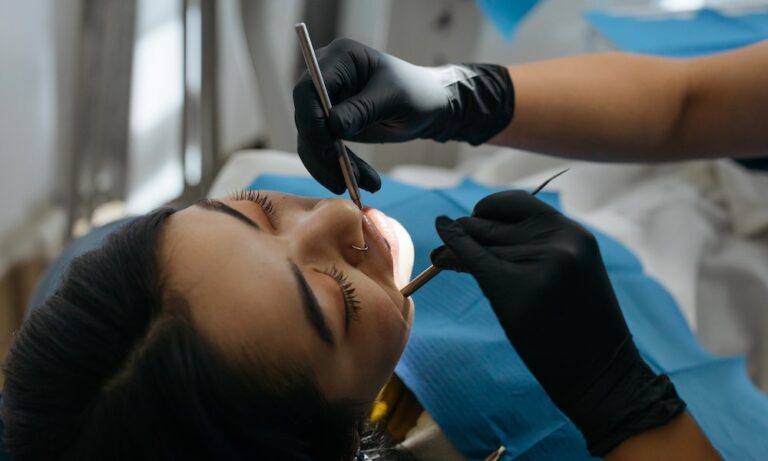Overcoming Barriers to Periodontal Care with Medicaid: A Practical Guide for Success
Navigating the world of Medicaid benefits for periodontal care can be challenging, especially when it comes to addressing coverage limitations, finding a qualified provider, and deciphering complex insurance requirements. To empower you with the tools and resources needed to overcome these hurdles, we’ve crafted a comprehensive guide that addresses the most common obstacles faced by patients utilizing Medicaid for their periodontal care.
In this guide, we’ll delve into practical strategies for tackling common barriers, such as understanding your Medicaid benefits, locating a Medicaid-approved periodontist, and maximizing your coverage for a tailored, effective periodontal care plan. By following the tips and valuable insights provided, you’ll be better equipped to break through these challenges and make the most of your Medicaid benefits for maintaining a healthy smile.
Embark on a smooth and successful periodontal care journey with Medicaid by leveraging the knowledge and resources provided in this insightful guide.
1. Understanding Your Medicaid Benefits for Periodontal Care
The first step in addressing obstacles related to periodontal care with Medicaid is gaining a solid understanding of your benefits. It’s essential to recognize that Medicaid is a state-run program; therefore, coverage for periodontal care may vary depending on your state of residence.
To determine your specific Medicaid benefits for periodontal care, start by reviewing your state’s Medicaid dental services webpage or contacting your state’s Medicaid office directly. Familiarize yourself with covered procedures, coverage limits, and co-payment requirements that may apply to your periodontal treatment. By thoroughly understanding your Medicaid benefits, you’ll be better prepared to make informed decisions about your care and maximize your coverage.
2. Finding a Medicaid-Approved Periodontist
Another challenge faced by many Medicaid patients is locating a qualified periodontist who accepts Medicaid. To find a Medicaid-approved periodontist in your area, begin by searching your state’s Medicaid provider directory or using the American Dental Association’s (ADA) Find-a-Dentist tool. Additionally, you may want to consult your primary care physician or general dentist for recommendations. They may have insights about Medicaid-accepting specialists within their network.
When evaluating potential periodontists, keep the following factors in mind:
- Confirm whether the periodontist accepts Medicaid: Directly verify with the practice to ensure they are currently accepting Medicaid patients. Remember that some providers may be listed as Medicaid providers but no longer accept new Medicaid patients.
- Verify in-network status: Ensure that the periodontist is considered an in-network provider under your Medicaid plan to maximize your coverage and eliminate unexpected out-of-pocket expenses.
- Check for experience and credentials: Research the periodontist’s education, experience, and board certifications to ensure that you are receiving top-quality care.
3. Maximize Your Coverage: Proactively Address Coverage Limitations
One of the most significant obstacles faced by Medicaid patients is the coverage limitations for periodontal care. While it may not be possible to alter these restrictions directly, proactive communication with your periodontist can help you develop a treatment plan that maximizes your coverage and minimizes out-of-pocket expenses.
Consider the following strategies:
- Prioritize treatments: Work closely with your periodontist to prioritize essential treatments within your coverage limits, focusing on the most pressing periodontal issues first.
- Stagger treatments over time: In cases where your coverage limits are insufficient for all necessary treatments, discuss staggering the procedures over time, utilizing your annual benefit limits more effectively.
- Alternative treatments: Consult your periodontist about alternative treatment options that may be more affordable or covered under your Medicaid benefits.
Remember that open communication and collaboration with your periodontist are crucial when addressing coverage challenges. A reputable provider will work with you to find the best solution for optimizing your periodontal care within your Medicaid benefit limitations.
4. Coordinate Care: Ensure Smooth Coordination with Other Providers
Receiving periodontal care under Medicaid can sometimes be complicated by the need to coordinate care with general dentists, physicians, and other healthcare providers. To streamline this process and minimize potential obstacles, consider the following tips:
- Stay informed: Before proceeding with any periodontal care, ensure that you fully understand any referrals, pre-approvals, or pre-authorizations required by your Medicaid plan.
- Coordinate with your general dentist: Work closely with your general dentist to coordinate care, referrals, and information sharing with the Medicaid-approved periodontist.
- Keep track of documentation: Ensure that you have all necessary documentation, including insurance cards, medical and dental records, and referral letters, to ensure a seamless experience when coordinating with multiple providers.
By keeping these factors in mind, you can minimize confusion and streamline the coordination of your periodontal care with Medicaid.
5. Advocacy and Community Resources: Tapping into Additional Support
Lastly, it’s essential to remember that you don’t have to navigate the challenges of Medicaid and periodontal care alone. Several resources can assist you in overcoming obstacles and advocating for your oral health:
- Local Dental Schools: Many dental schools offer low-cost or free dental care, particularly for complex procedures. They may have a periodontics department that accepts Medicaid or partners with Medicaid providers.
- Nonprofit Organizations: Several nonprofit organizations are dedicated to providing dental care to low-income individuals and communities, such as the Dental Lifeline Network.
- Community Health Centers: Federally-funded health centers may offer dental services for Medicaid patients, often on a sliding fee scale based on income.
By leveraging these community resources, you can gain additional support in navigating and overcoming common barriers to periodontal care with Medicaid.
Conclusion
By understanding and addressing the challenges related to Medicaid and periodontal care, you can maximize your benefits and achieve a healthier smile, all with the support of a dedicated, Medicaid-accepting periodontist. At Dental Specialists of Southern Colorado, our team is committed to assisting you in navigating and overcoming these obstacles, ensuring that you receive top-quality periodontal care tailored to your needs and budget constraints.
Are you ready to begin your journey towards improved periodontal health with Medicaid and Dental Specialists of Southern Colorado? Schedule a consultation with our dental specialists for gum disease today and allow our team to help you unlock the full potential of your Medicaid benefits, design a personalized treatment plan, and receive exceptional care every step of the way. Don’t wait – contact Dental Specialists of Southern Colorado now and take the first step towards a brighter, healthier smile!

 header-logo
header-logo





